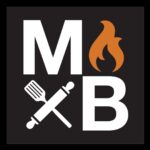10 items to start smoking barbecue
Here are ten items that will set you on your path into the world of meat smoking and barbecue. There are plenty of gadgets on the market these days, some of which are very useful, some are not. It is important however, to work on the basics first so I recommend starting with these and going from there
- A smoker
Who would’ve thought? As you may have already noticed I’m a big fan of Weber grills and smokers. Weber have three sizes in their Weber Smokey Mountain series and you can also adapt their Kettle barbecues into smokers. Weber has been around for years, they are reliable and have a great reputation. You can’t go wrong.
Here in Australia the ProQ smokers have gained a very good reputation and are increasing in popularity. They function very similarly to the Weber Smokey Mountain with a few extra features. You can see their range here.
The range of smokers on the market is ever increasing. My advice is to start simple with a bullet or kettle shaped smoker and go from there. The bottom line, as with all things barbecue, is to do some research. Find what smoker best suits you in terms of what you want to cook, how much you want to cook, how much time you want to spend cooking and most importantly, how much research and practice you are willing to put in.
2. Charcoal
In the barbecue world charcoal falls into two categories – hardwood lump charcoal and charcoal briquettes. I use the briquettes more than the lump because each briquette is roughly the same size so you have more control over temperature and therefore have a much better idea of how long it will burn for.
For a more in depth discussion on charcoal check out Meathead Goldwyn’s article here.
3. Wood
Fruitwood is the most common type of wood used for smoking, followed by hardwoods and nutwoods. I always like to have some apple, hickory and cherry in the shed. These three types are the most popularly used.
A lot is made about what is the best fruit, hard or nut wood to use when smoking. Possibly too much. At the end of the day the cut of meat and how you prepare it is far more important than the wood you use so don’t stress too much.
4. A good digital thermometer
This is very important. Trying to guess when your pork shoulder is cooked based on how long Barbecue Joe told you it took him to cook his on a barbecue forum is asking for trouble.
If possible buy a dual probe thermometer. Having two probes allows you to monitor the temperature of the meat as well as the temperature inside the cooker. Do not rely on the built in thermometer your barbecue has. They are notoriously unreliable.
5. A chimney starter
The best and most efficient way to start your fire. As you can see mine as been well used…

6. A pair of heat resistant gloves
You may be cooking low and slow but things still get warm to the touch.
7. A pair of long tongs
I don’t think I really need to explain this one. The one thing I will say is use the tongs sparingly and gently. The last thing you want to do is rip off your perfectly formed bark when taking the meat off the grill.
8. A good butcher
Getting friendly with you local butcher is a great way ensuring you get exactly what cut of meat you want and how you want it prepared.
9. A reliable resource. Or two.
Nowadays there is a lot of help out there when it comes to barbecue and smoking. As I’ve mentioned in many of our smoking articles Meathead Goldwyn is my primary source along with Aaron Franklin for all things techniques and recipes. You can’t go wrong with these two pitmasters!
10. Patience
You’ll hear the term ‘low n slow’ a lot when people are discussing smoking. Not only does it refer directly to cooking those large, tough cuts of meat but also the time it takes to research, practice and experiment. Keep at it. The results are worth it!

Barbecue is an imperfect science. It takes practice, patience and a bit of love. When you first start your research it can feel like an information overload hearing about the different types of charcoal and wood, direct and indirect heat, ‘the stall’, whether to wrap or not to wrap and so on. Don’t be put off – take notes, experiment, enjoy the results and most importantly have some fun.


